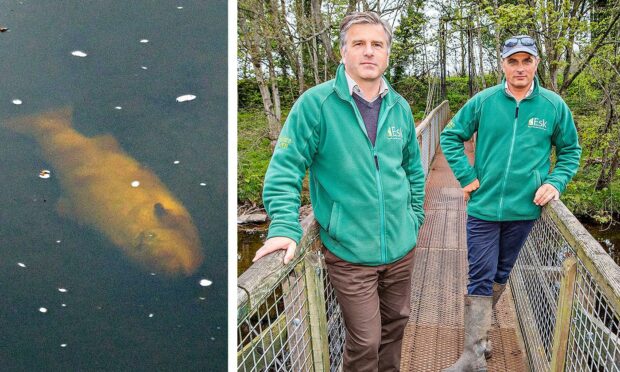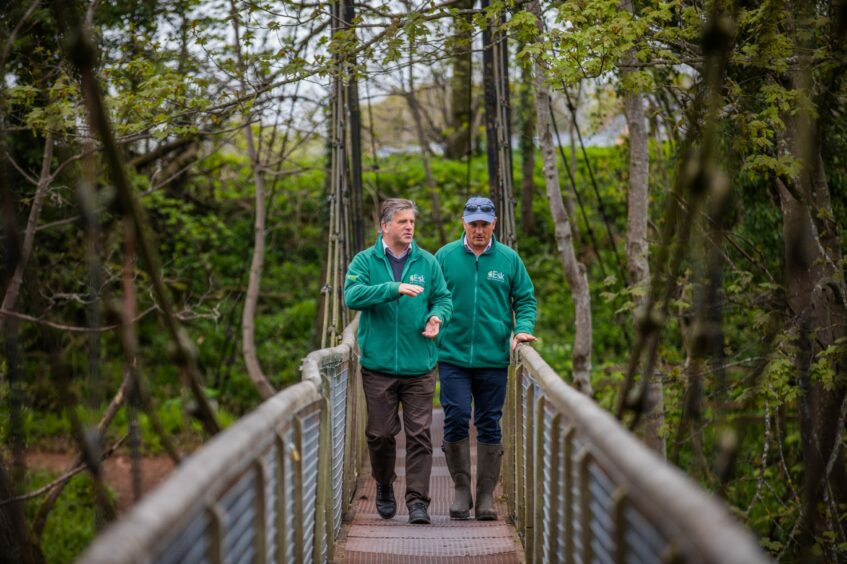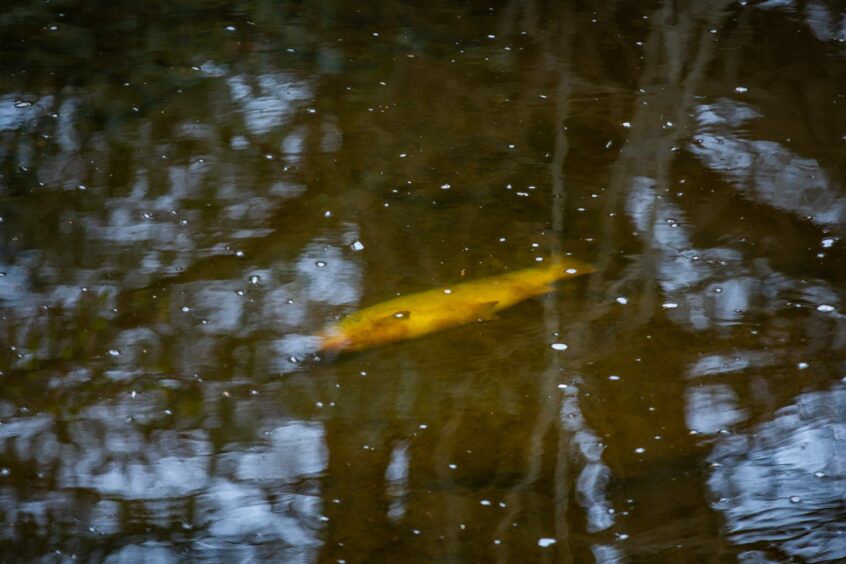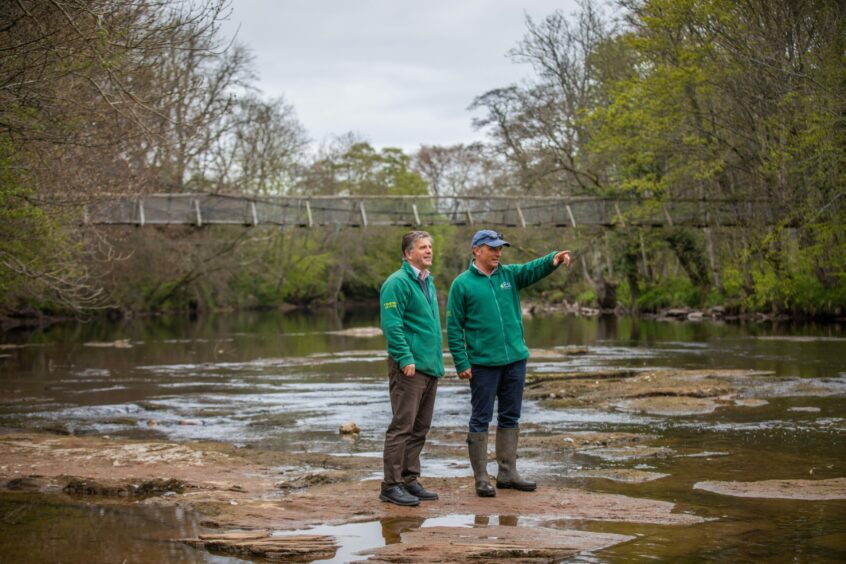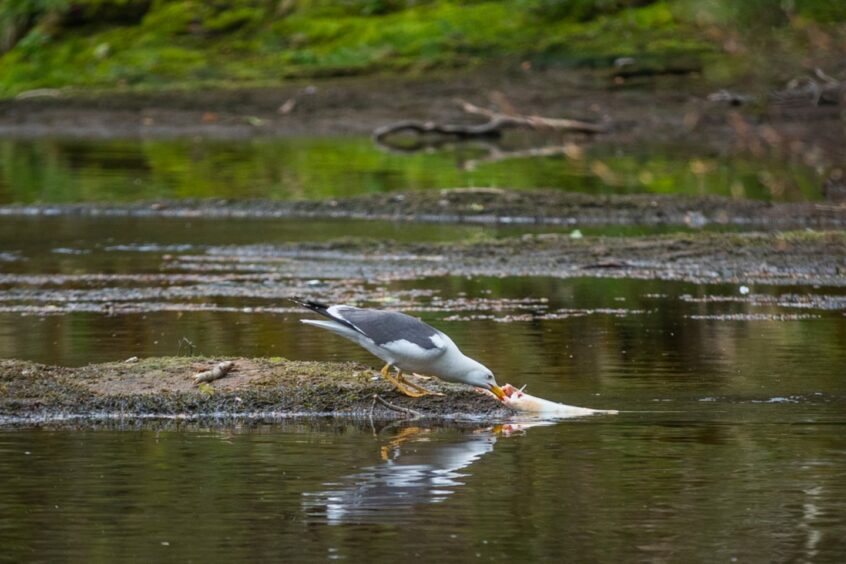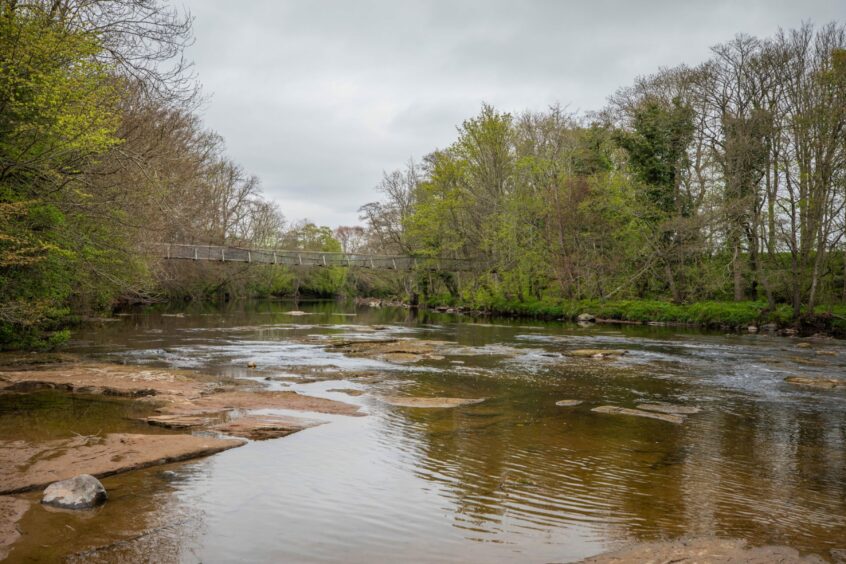Angus experts say folk shouldn’t be alarmed by the sight of dead or dying salmon on some of the area’s most popular North and South Esk walks.
Esk District Salmon Fishery Board fear hundreds of adult fish will die around Edzell in the coming weeks.
They are expected to fall victim to a naturally-occurring infection called Saprolegnia.
And the issue will affect other parts of the North and South Esks.
It’s also a killer in other Scottish rivers.
Every year the local situation prompts worried calls to the board, Angus Council and Sepa.
But while research into the problem continues, people have been assured there isn’t a risk to human or pet health.
What causes the deaths?
Saprolegnia is a fungal-like organism which appears as white, grey or brown fur-like mould on salmon.
It has been detected in both Angus Esks.
But it is more prevalent in the North Esk, which has its source in the Angus glens and a river mouth just north of Montrose.
There is no treatment for the condition and affected fish rarely recover.
What you should do if you see dead or dying fish
Esk District Fishery Board director Dr Craig MacIntyre says it’s upsetting for walkers to see large fish dead at the riverbank or morbid in the water.
The North Esk in particular has popular walks around the Shakin’ Brig at Edzell up to the Blue Door at the north of the village and beyond.
And the board receive many reports from worried visitors that something untoward may be going on in the river.
“This sight can be very distressing for those that love the river and these magnificent fish, especially anglers,” said Craig.
“Saprolegnia normally manifests around the end of April.
“But it should clear up by the beginning of July, as the water starts to warm up.
“Unfortunately, there are no cures or practical treatments for the disease on wild salmon.
“The disease is exacerbated by the low water we are currently experiencing, and a good fall of rain would be very welcome for the river.
“Salmon that have just entered the river from the sea are particularly susceptible to infection, as their scales are looser and skin thinner than those that have spent some time in freshwater.
Overall river population healthy
“While many dead or dying fish may be visible, typically there are over 2,000 adult salmon in the river at this time, and maybe 200-300 fish are badly infected with the fungus,” said Craig.
“It is never nice to see dead fish in the river, however the salmon population of the River North Esk as a whole is not at risk from this fungus.”
But most fish will not get the disease. Footage taken from yesterday in the same stretch of river. @fms_scotland @AST_Salmon pic.twitter.com/nC69ij9JbP
— Esks Fishery Board (@EsksBoard) May 3, 2022
The board is working with Marine Scotland Fish Health Inspectorate and Aberdeen University to see if anything can be done.
And Craig emphasised the important role anglers can play in protecting wild salmon.
The season on the Esks got underway in mid-February.
“They can really help by landing hooked salmon quickly, minimising handling, using knotless nets, and keeping the fish wet at all times before release,” he said.
“And we would encourage them to avoid dragging the fish onto the bank or gripping them too tightly or roughly.
“This can remove the important protective mucous from the fish and allow the fungus to take hold.”
In some cases, the infection has shown as a clear handprint around the tail of a salmon that’s been gripped by an angler.
Rural Affairs department advice
The Scottish Government’s rural affairs department said people should still be cautious if they come across dead or dying salmon.
“The public are advised not to touch or try to rescue those fish,” said a spokesperson.
And they said owners should not let dogs swim in the river as the fish will have limited space to move in small shallow pools.
“In the first instance the public should inform the local district salmon fishery boards of dead fish they observe in rivers.”
